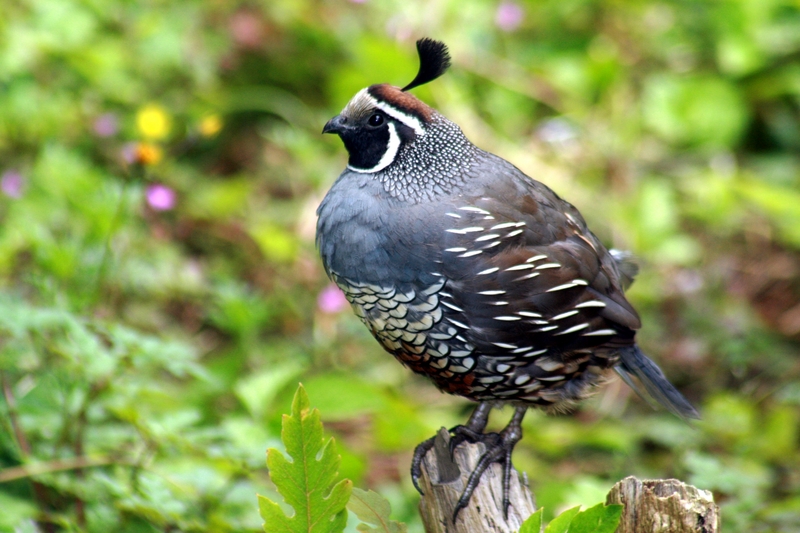|
| Query: callipepla | Result: 2nd of 74 | |
California Quail (Callipepla californica) - Wiki
| Subject: | California Quail (Callipepla californica) - Wiki
| |

| Resolution: 3888x2592
File Size: 6020580 Bytes
Date: 2007:08:03 14:20:57
Camera: Canon EOS DIGITAL REBEL XTi (Canon)
F number: f/7.1
Exposure: 1/200 sec
Focal Length: 300/1
Upload Date: 2007:09:26 14:58:21
|
ERROR : Server Busy(-1105)
ERROR : Server Busy(-1105)
California Quail (Callipepla californica) - Wiki
California Quail
From Wikipedia, the free encyclopedia
[Photo] Male California Quail (Callipepla californica). Date 2007. Author Mila Zinkova (http://home.comcast.net/~milazinkova/Fogshadow.html) Copyright (C) 2007 Mila Zinkova
Permission is granted to copy, distribute and/or modify this document under the terms of the GNU Free Documentation License, Version 1.2 or any later version published by the Free Software Foundation; with no Invariant Sections, no Front-Cover Texts, and no Back-Cover Texts. A copy of the license is included in the section entitled "GNU Free Documentation License". |
The California Quail, Callipepla californica, also known as the California Valley Quail or Valley Quail, is a small ground-dwelling bird in the New World quail family. It is the state bird of California.
These birds have a curving crest or "plume" that droops forward - black in males and brown for females; the flanks are brown with white streaks. Males have a dark brown cap and a black face with a brown back, a grey-blue chest and a light brown belly. Females and immature birds are mainly grey-brown with a light-colored belly. Their closest relative is Gambel's Quail which has a more southernly distribution and a scalier appearance. The two species separated about 1-2 million years ago, during the Late Pliocene or Early Pleistocene (Zink & Blackwell, 1998).
The California Quail is a highly sociable bird that often gathers in small flocks known as "coveys", and one of the daily communal activities is the taking of dust baths. A family of quail will select an area where the ground has been newly turned or is soft, and using their underbellies, will burrow downward into the soil some 1-2 inches. They then wriggle about in the indentations they have created, flapping their wings and ruffling their feathers, causing dust to rise in the air. They seem to prefer sunny places in which to create these dust baths, and an ornithologist is able to detect the presence of quail in an area by spotting the circular indentations left behind in the soft dirt, some 3-6" (7-15 cm) in diameter.
They are year-round residents. Although this bird coexists well at the edges of urban areas, it is declining in some areas as human populations increase. They were originally found mainly in the southwestern United States but they have been introduced into other areas including British Columbia, Hawaii, Chile, New Zealand, and to Norfolk Island and King Island in Australia.
These birds forage on the ground, often scratching at the soil. They can sometimes be seen feeding at the sides of roads. Their diet consists mainly of seeds and leaves, but they also eat some berries and insects. If startled, these birds explode into short fast flight. Given a choice, they will normally make their escape on foot.
Their breeding habitat is shrubby areas and open woodlands in western North America. The nest is a shallow scrape lined with vegetation located on the ground under a shrub or other cover. The female usually lays around 12 eggs. Once they are hatched, both parents look after the young.
http://en.wikipedia.org/wiki/California_Quail
| The text in this page is based on the copyrighted Wikipedia article shown in above URL. It is used under the GNU Free Documentation License. You may redistribute it, verbatim or modified, providing that you comply with the terms of the GFDL. |
|
Comments |
|---|
| | Guest |
|
Scientific Name: Callipepla californica (Shaw, 1798)
Common Names: California Quail, California Valley Quail, Valley Quail
French: Colin de Californie; German: Schopfwachtel; Spanish: Colín de California, Codorniz californiana
Taxonomy: Tetrao californicus Shaw, 1798, Monterey, California, USA.
Synonyms:
Lophortyx californica (Shaw, 1798)
Lophortyx californicus |
^o^
Animal Pictures Archive for smart phones
^o^
|
|
|

